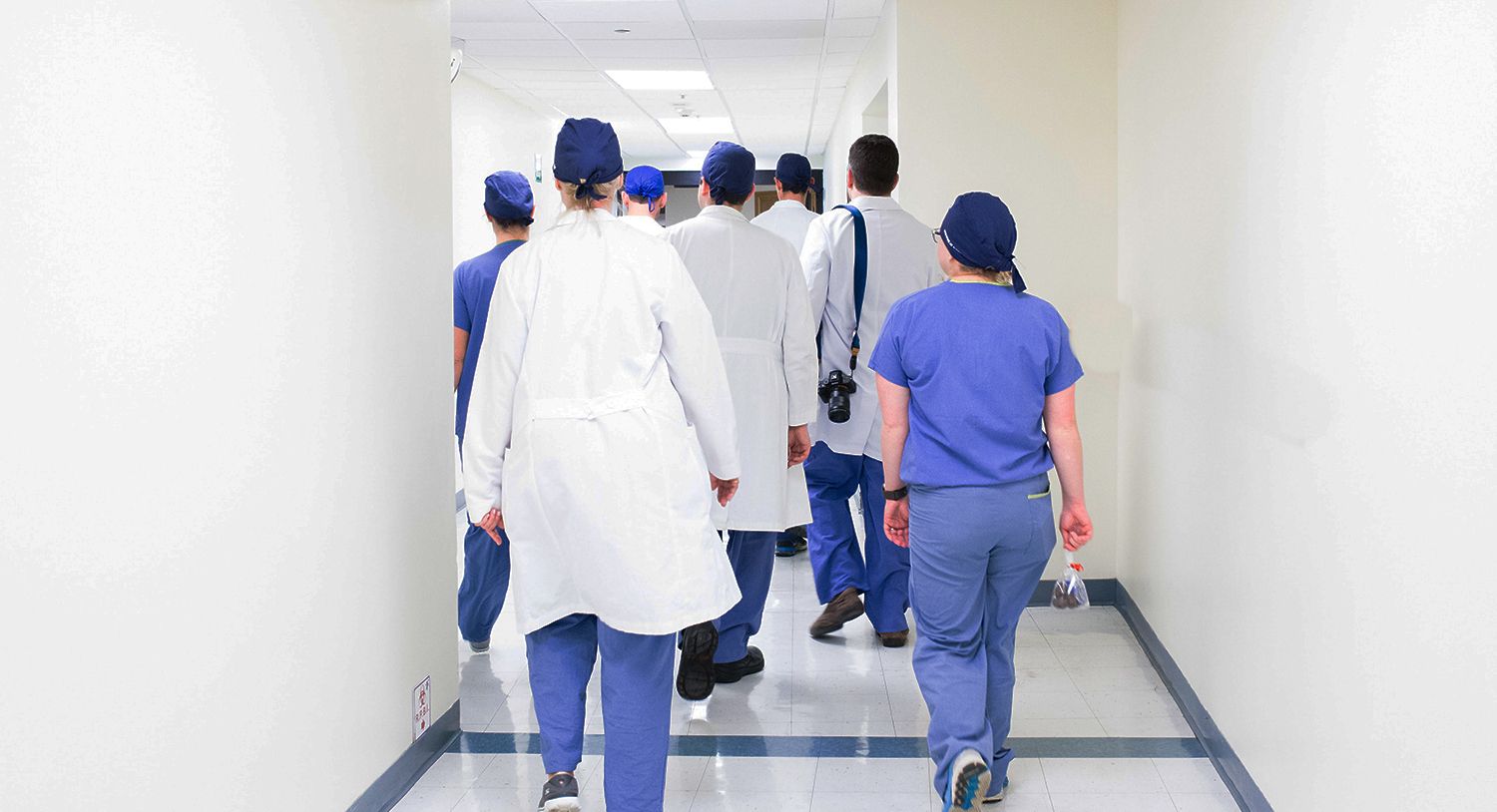Études de cas
200 doctors at your bedside

Since primary care doctors are under pressure to deliver for a growing and ageing population, they’re looking to technology to help reduce the burden of work.
The benefits of crowd sourcing in general practice
In this article, Dutch GP, Bart van Pinxteren, explains how doctors can use mobile messaging to enhance informal consultations and access hundreds of colleagues in real-time to treat patients quicker and reduce preventable specialist referrals
There are over 60,000 GPs practicing across the UK, serving a growing, aging population of people living with complex needs. As a result of this pressure on primary care, doctors are looking to advanced technology to help reduce the burden.
A research study involving 200 general practitioners found that mobile messaging was considered a valuable and highly educational platform to assist on cases. While doctors have informally consulted with each other on cases for centuries, the introduction of mobile technology as a crowd-sourcing tool – which allows them to consult with hundreds of physicians on one central platform – has proven to deliver both practical and educational value.
There’s increasing awareness and concern around the safety of patient records stored and shared online. Anyone found to have leaked information – be it maliciously or accidentally – is held accountable, which means it is essential to find a failsafe solution that guarantees sensitive data is secure.There is also a requirement for rapid and lean communication to relieve pressure on health and social care, as a growing number of patients are being transferred from acute to community care.
One of the most-effective ways to enhance communication and collaboration in primary care, and maximise the available resource, is to enable GPs to share knowledge and specialisms on a much-broader scale through crowd-sourcing; the practice of inputting or obtaining information by enlisting a large number of people. By giving unbridled access to hundreds of doctors that specialise in different areas and have complementary experiences, you can expand the possibilities in patient care and avoid referrals onto secondary departments.
While it is possible to crowd source through other means such as email, there are disadvantages; namely with time lapses and file limitations. Standard SMS could be used, but this uses mobile allowance and could be costly in the long-run.
A problem shared
Mobile messaging has proven to be the most-effective method for asynchronous conversations with colleagues or large groups of practitioners.
In my personal experience, it prevents me from having to phone in or go back to the practice to look for a nurse or doctor who could be in the midst of a consultation.
I am reminded of one of my cases involving a patient who presented with unusual blue sweat. It was not something I had encountered in my years of practicing medicine, and in that initial consultation I was unsure of how best to treat them.
I was reluctant to let them leave the practice without answers, and didn’t want to refer them to a specialist until I was sure that was necessary.
So, during our consultation, I got my mobile phone out of my pocket. Many may consider this rude – in most circumstances it would be – but in this case, I was using it to access hundreds of GPs from across the country.
The patient consented to me taking a picture of her condition, I shared it with the group, and within minutes I had a response; the sweat was uncommon but harmless, and required a simple course of medication. As a result of a brief conversation, I was confident in my diagnosis and the patient left reassured and with no requirement for follow-up appointments or unnecessary specialist care.
Making the case
There are endless benefits to using mobile communication in general practice, but caution should be heeded when choosing to use standard consumer messaging services such as WhatsApp, partly due to the blurred lines between professional and personal life, but also potential vulnerabilities, limited security measures, and apparent privacy issues.
Rather than abandon mobile messaging altogether, we investigated alternatives and found Siilo, a messaging network service designed specifically for healthcare professionals that could be downloaded as a free application from the app store and is currently used by over 40% of the GPs in the Netherlands.
With enhanced log-in procedures, including fingerprint recognition, inbuilt blurring tools to share anonymised photos among peers, and separate encrypted storage; the messenger enables me to confidently share patient information; images, test results, with GPs, pharmacist or consultants in real-time, and get responses during consultation. It also allows me to swiftly communicate with colleagues in and outside our practice without the constraints of phone calls or emails, and I am safe in the knowledge that information cannot be seen by anyone outside the medical field.
The app has effectively lowered the barriers for finding and communicating across healthcare organisations, regions, and between primary and secondary care.
The Siilo group I use, which contains 200 GPs, is only one of many more initiated by doctors. It is inspiring that doctors can take control of creating their own digital networks among colleagues, independent of their location.
Informal patient discussions among healthcare professionals has been standard practice since medicine began, but we are now expanding the possibilities using digital advancements.
Crowd sourcing within a professional environment is a powerful mechanism for obtaining and sharing information with specialists and general practitioners that could decrease referrals and wait times for patients, and ultimately enhance their experience of primary care.
Bart van Pinxteren
REPOSTED WITH PERMISSION FROM: https://www.buildingbetterhealthcare.co.uk/news/article_page/Comment_200_doctors_at_your_bedside/131395
Bart van Pinxteren
GEPLAATST MET TOESTEMMING VAN: